
Back Row Jupiter, Saturn Middle Row Uranus, Neptune Front Row Earth, Venus, Mars, Mercury
The eight planets are Mercury, Venus, Earth, Mars, Jupiter, Saturn, Uranus, and Neptune. Mercury is closest to the Sun. Neptune is the farthest. Planets, asteroids, and comets orbit our Sun. They travel around our Sun in a flattened circle called an ellipse.

in solar system. moon and the sun, mercury and earth, mars and venus, jupiter or saturn
Here are the planets listed in order of their distance from the Sun: Mercury, Venus, Earth, Mars, Jupiter, Saturn, Uranus, and Neptune. An easy mnemonic for remembering the order is "My Very.

1pcs Sun Jupiter Saturn Neptune Uranus Earth Venus Mars Mercury Glowing Wall Stickers
1. Mercury is the fastest planet, which speeds around the sun at 47.87 km/s. In miles per hour this equates to a whopping 107,082 miles per hour. 2. Venus is the second fastest planet with an orbital speed of 35.02 km/s, or 78,337 miles per hour. 3. Earth, our home planet of Earth speeds around the sun at a rate of 29.78 km/s.

Solar System, Earth, Saturn, Mercury, Venus, Earth, Mars, Jupiter, Saturn, Uranus, Neptune
The order of the planets in the solar system, starting nearest the sun and working outward is the following: Mercury, Venus, Earth, Mars, Jupiter, Saturn, Uranus, Neptune and then.

SolarSystem. auf schwarzem Hintergrund. Sonne, Merkur, Venus, Erde, Mars, Jupiter
For three-quarters of a century, schoolkids learned that our solar system has nine planets: Mercury, Venus, Earth, Mars, Jupiter, Saturn, Uranus, Neptune and Pluto. But things.

Colour Song🌞Sun, Mercury, Venus, Earth, Mars, Jupiter, Saturn, Uranus and Neptune YouTube
Planetary Fact Sheet - Metric * - See the Fact Sheet Notes. Planetary Fact Sheet in U.S. Units Planetary Fact Sheet - Values compared to Earth Index of Planetary Fact Sheets Notes on the Fact Sheets
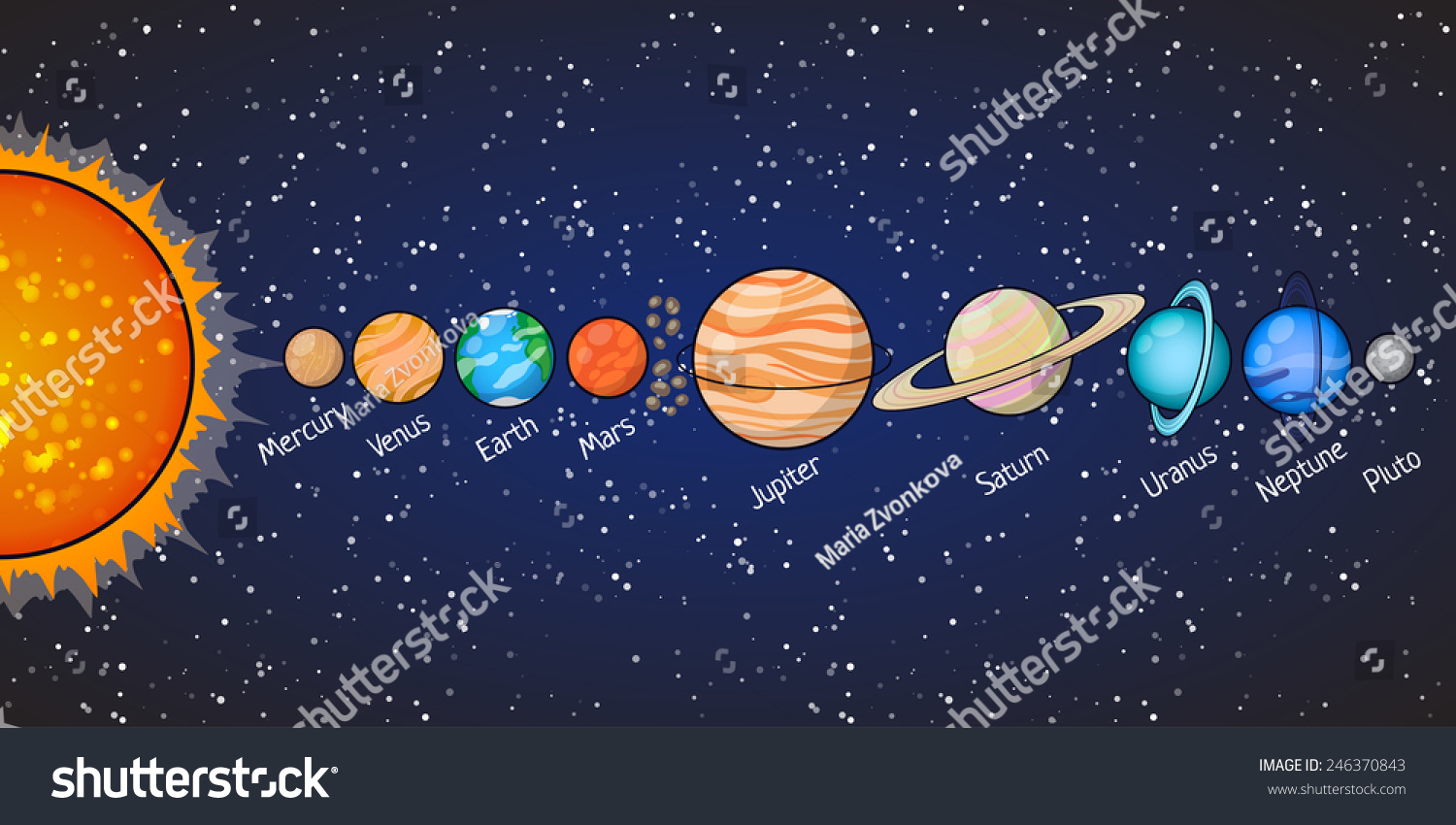
Set Solar System Mercury Venus Stock Vector 246370843 Shutterstock
Our solar system formed about 4.6 billion years ago. The four planets closest to the Sun — Mercury, Venus, Earth, and Mars — are called the terrestrial planets because they have solid, rocky surfaces. Two of the outer planets beyond the orbit of Mars — Jupiter and Saturn — are known as gas giants; the more distant Uranus and Neptune are.
Set of bright realistic on solar system like Mercury stock vector 1814491 Crushpixel
Since Pluto has a very elliptical orbit, it can sometimes get closer to the Sun and Earth than Neptune. The most cratered planet of the solar system is Mercury. Some believe that Saturn and Jupiter came close once and thus provoked the Great Flood on Earth. Every 15 years, the rings of Saturn briefly disappear from view due to their angle.
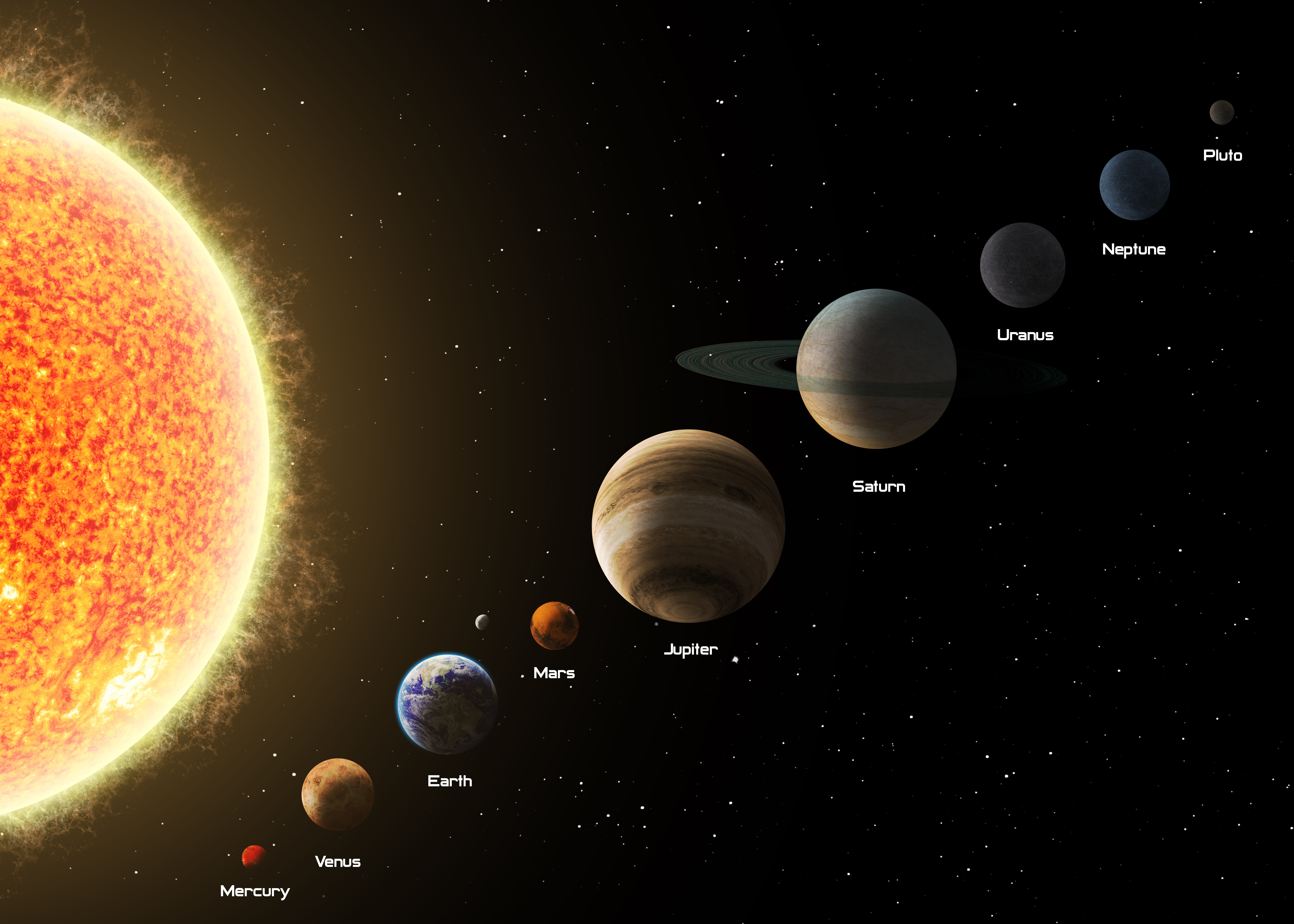
space, Solar System, Sun, Mercury, Venus, Earth, Mars, Jupiter, Saturn, Uranus, Neptune, Pluto
It is unlike the terrestrial planets (Mercury, Venus, Earth, Mars), or the gas giants (Jupiter, Saturn), or the ice giants (Uranus, Neptune).

Difference between Astronomy and Astrology Jugal Maharaj
Exploring the surface of Mars since 2021. OSIRIS-REx Delivered asteroid Bennu sample in September 2023. Curiosity Rover Exploring the surface of Mars since 2012. Lunar Reconnaissance Orbiter Orbiting the Moon since 2009. BepiColombo* En route to Mercury orbit in 2025. *ESA/JAXA-led. Mars Reconnaissance Orbiter Orbiting Mars since 2006. MAVEN
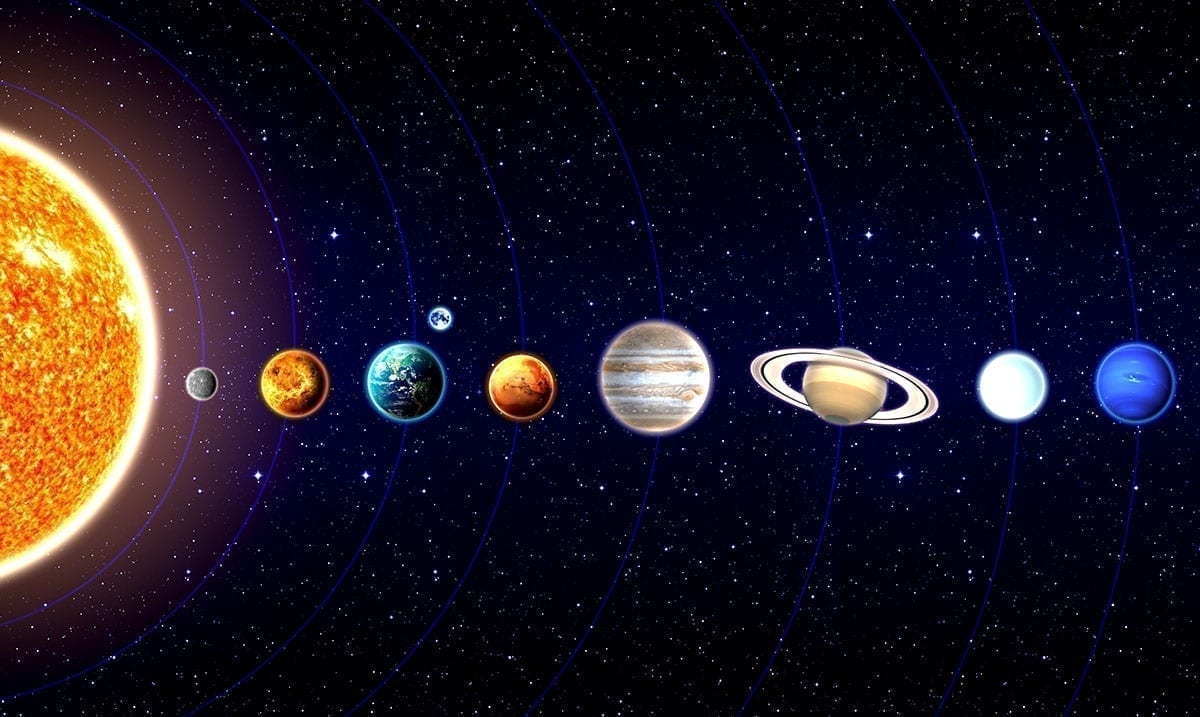
Mercury, Venus, Mars, Saturn, Jupiter And Uranus Will All Be Visible In The Sky This Week
Venus, Mars, Jupiter, Saturn, Uranus, Neptune, and Pluto also go retrograde at various times of the year as well. (It's even possible for some of these planets to be retrograde at the same time.)
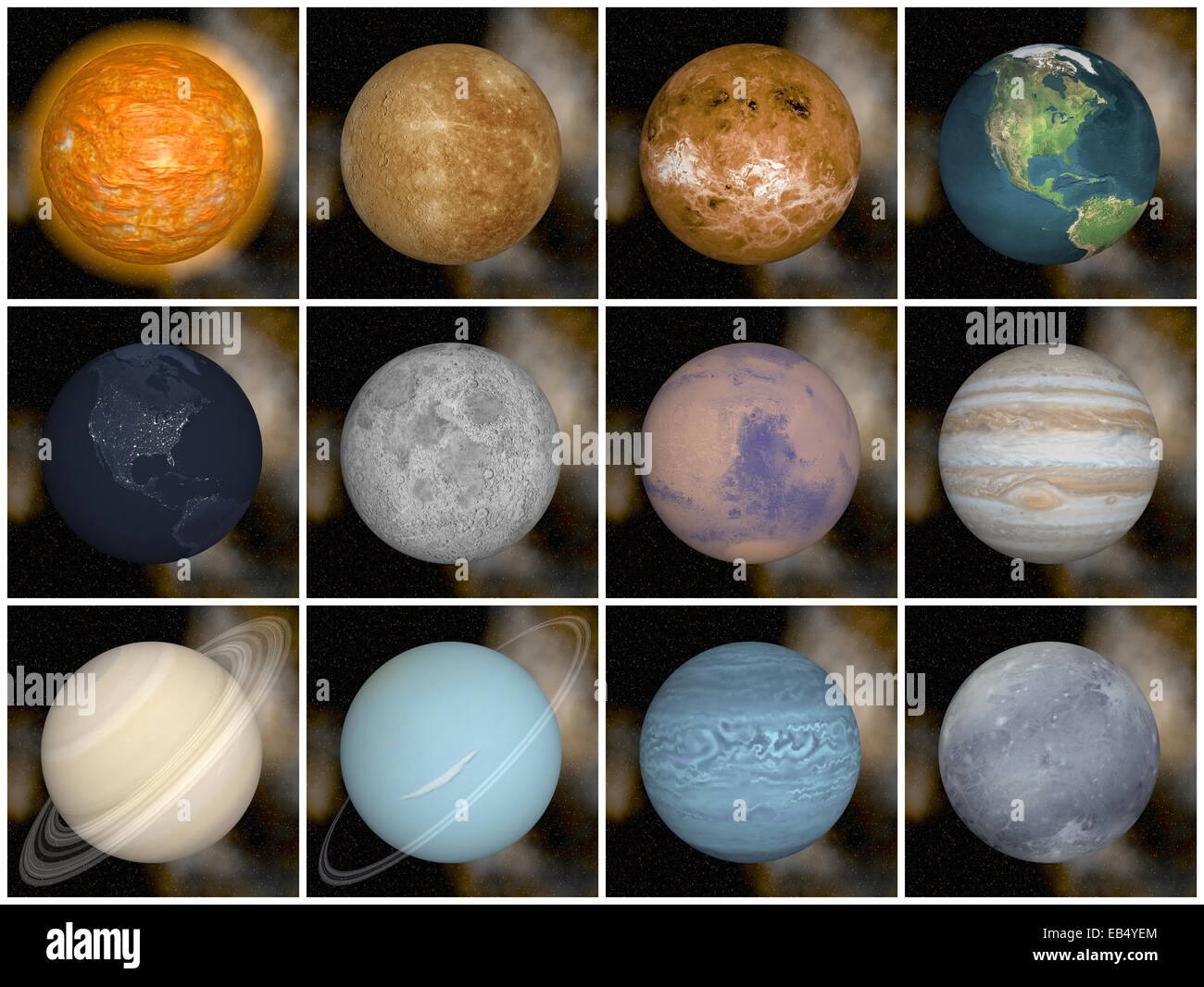
Solar system as sun mercury venus earth moon mars jupiter saturn uranus neptune pluto
Using this new definition, there are eight planets in the solar system: Mercury, Venus, Earth, Mars, Jupiter, Saturn, Uranus, and Neptune. Pluto was re-classified as a "minor planet". Nevertheless, for historical reasons, Pluto is still found with the 8 planets on the JPL Planetary Ephemeris. See the complete Solar System planetary.
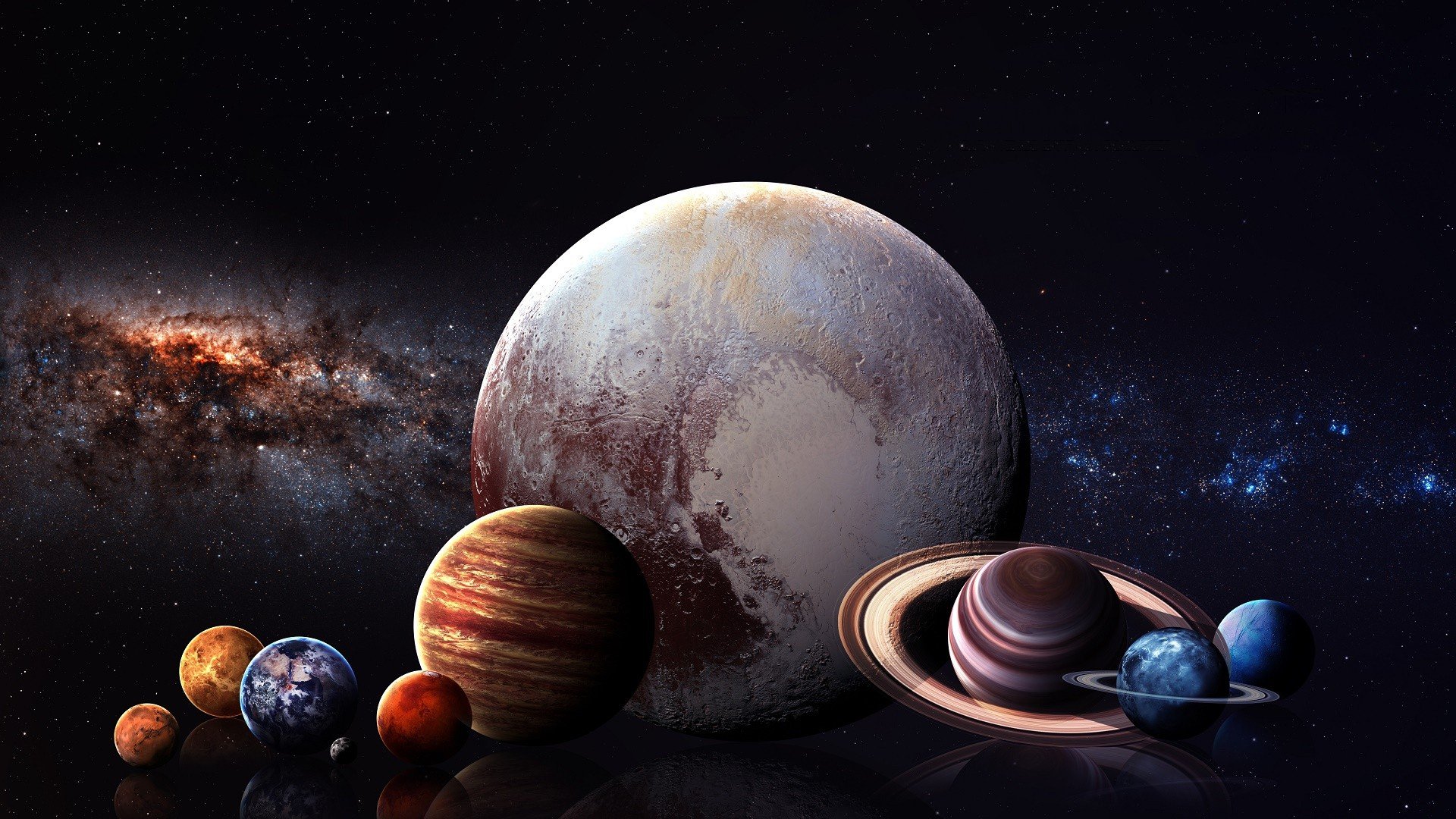
digital art, Space art, Space, Stars, Solar System, Milky Way, Mercury, Venus, Earth
A planet is any of the large bodies that orbit the Sun, including Mercury, Venus, Earth, Mars, Jupiter, Saturn, Uranus, and Neptune, in order of closeness to the Sun. Mercury Mercury is the first of the four terrestrial planets. This means it is a planet made mostly of rock. The planets closest to the Sun—Venus, Earth, and Mars—are the other three.

Toutes les planètes du système solaire, Mercure, Vénus, la Terre, Mars, Jupiter, Saturne, Uranus
Our solar system consists of the planets Mercury, Venus, Earth, Mars, Jupiter, Saturn, Uranus, and Neptune, as well as countless astroids and comets, that are gravitationally bound to the Sun.

Is Pluto about to be reinstated as a in the Solar System?
The terrestrial planets ( Mercury, Venus, Earth, and Mars) are characterized by their rocky composition and solid surfaces. On the other hand, the gas giants ( Jupiter, Saturn,.

Jupiter in the back. Saturn in front of Jupiter. From left to right Uranus and Neptune Earth
Solar System The Solar System [c] is the gravitationally bound system of the Sun and the objects that orbit it. [4] The largest of these objects are the eight planets, which in order from the Sun are four terrestrial planets ( Mercury, Venus, Earth and Mars ); two gas giants ( Jupiter and Saturn ); and two ice giants ( Uranus and Neptune ).